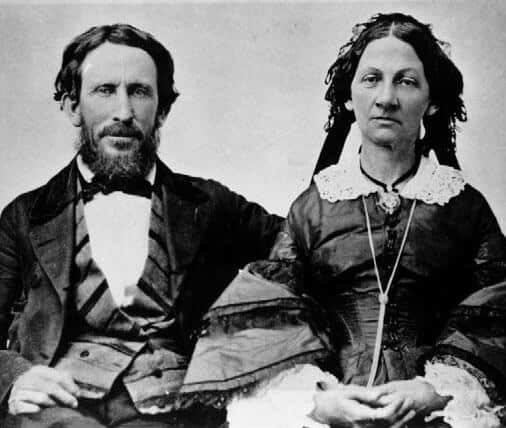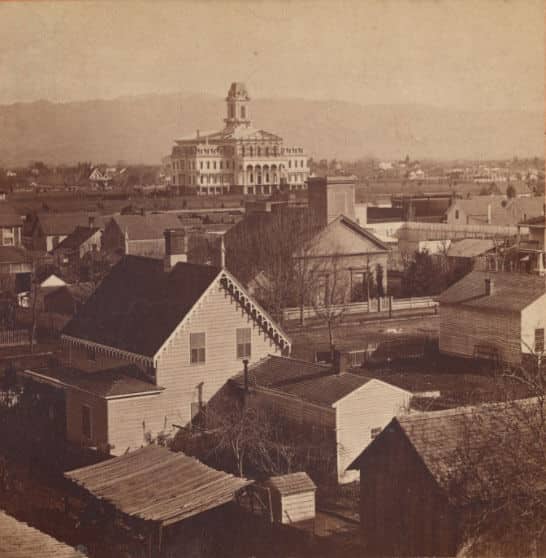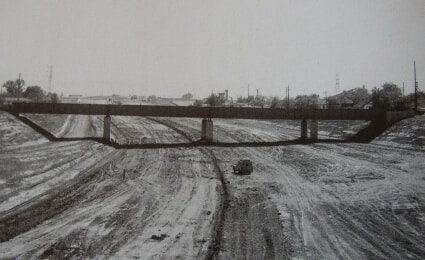History of SUN
The story of our neighborhood is roughly 175 years in the making
In many ways our South University Neighborhood story begins with James Frazier Reed as he departs Springfield, Illinois in 1846. He leaves with his wife, Margaret, his four children, his mother-in-law and assorted oxen, cattle and horses to walk from Illinois to California. He is the co-leader of the Reed-Donner Party.

James Frazier Reed and Margret Reed
When he is expelled from the party and winter sets in, he heads for San Francisco to raise rescue funds. He has to traverse the south bay and notes the beauty of the Santa Clara Valley.
After the rescue of his wife and children, returns here to live. He purchases 500 acres south of downtown San Jose and builds an adobe home at what today is the on-ramp to the 280 freeway approximately where Margaret Street and 4th Street would intersect. He located his flourmill where Virginia Street meets the Guadalupe River.
In 1848, he subdivides the land between into what was called “Reed’s Addition” to the city. It stretched between Reed and Keyes and First Street and the Coyote Creek. Our named streets: Margaret, Virginia, Martha were named for his wife and daughters.
Reed’s property was one of the first subdivisions in the state of California. His timing was impeccable and lots that sold for $53 in 1848 sold for over $1,200 the next year. Saint James Park and Washington Square were also parcels Reed ceded to the city.
San Jose Normal School was established in 1857, but did not have a permanent campus until 1872. Washington Square was the beginning of the campus and is now incorporated into today’s much larger San Jose State University. 1872 serves as the beginning of a period of residential development in today’s SUN that continued for about half a century. This area was built-out by the early 1920s, the last phase being small apartment houses.

View of California State Normal School and SUN neighborhood - San Jose 1872
Development remained relatively stabile until the Normal School became a state college in 1935 when our neighborhood, which now included Reed’s Addition, began to increasingly serve as an area devoted to student housing.
With its national accreditation in 1942 San José State College, began buying up properties adjacent to Washington Square. As enrollment increased, the college began to request that more areas near campus be rezoned to accommodate boarding houses and apartments. By mid-century, most of Reed’s Addition was rezoned to R-2, R-3 and R-4. Sororities, Fraternities and Private dormitories took root.
By 1965, the boom was over and occupancy in the older housing near San José State had dropped to 50 percent. High interest rates and construction costs had halted new housing construction by 1968.
At almost the same time Governor Reagan’s policies decentralized state mental institutions and created outpatient and group home settings within many of the state’s inner cities. In San Jose, near-campus landlords found their new tenants by providing residential mental health facilities and meeting the demands for transitional housing during the 1970s and later.

280 Freeway construction circa 1970
The 280 freeway construction was completed by 1972 devouring blocks of historic housing and splitting the neighborhood into today’s SUN and Spartan Keys neighborhoods. One-way couplets feeding freeway entrances increased traffic and speed on these streets and decreased their desirability as family homes. This contributed to a decline in individual resident ownership which today stands at just 10%.
New construction in the neighborhood halted and today, SUN remains a diverse mix of 19th century single-family residences, residences converted to boarding houses, 1920s apartment buildings, and post–World War II multiple-unit residences initially constructed for student housing. The physical character of the neighborhood has remained largely unchanged for forty years.
The distinctive character of the South Campus neighborhood in the last half of the 20th century is its link to San José State University as a student housing area. BUT, within this campus neighborhood is an area between campus and 280 and William and Margaret Streets that continues to retain an earlier sense of time and place reflective of residential development within the original city limits between 1870 and 1935. To preserve its historic fabric, the Reed Historic District was created in 2008.

The South University Neighborhood Association was chartered in the 1990s and has been actively working to enhance the quality of life for its residents.